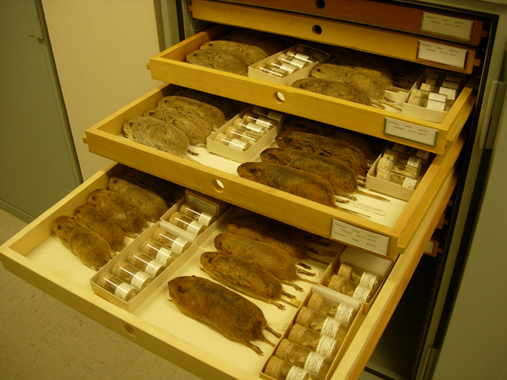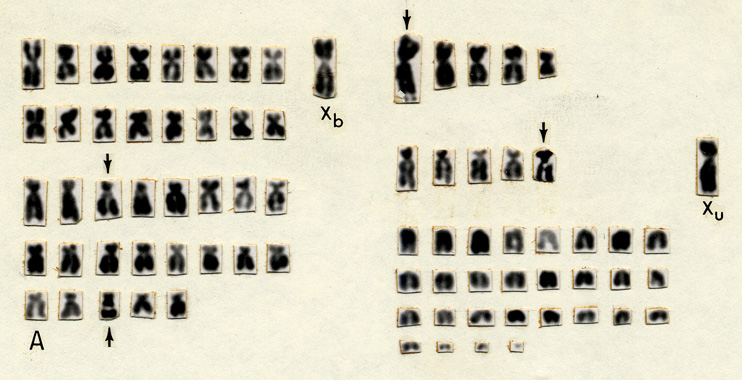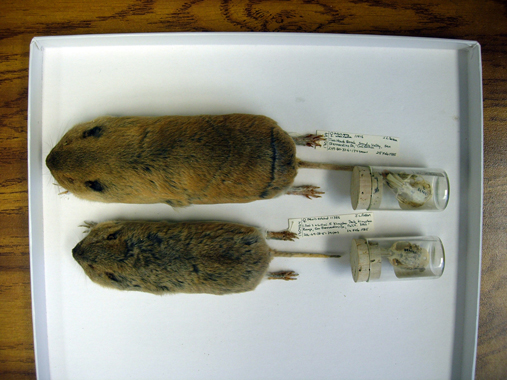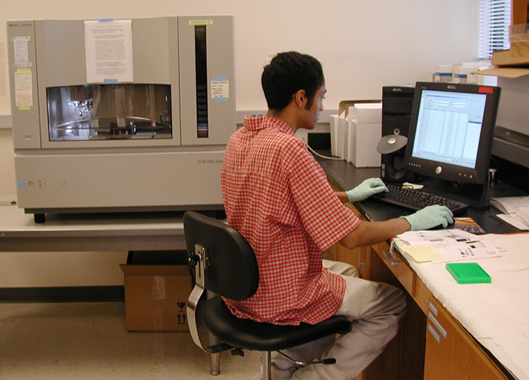Biogeography
Where do different pocket gophers live?

Grinnell recognized that the Californian landscape was rapidly changing. Farming and urbanization were encroaching on areas that were previously inhabited only by local animals. Grinnell was interested in evolution and in California he saw an opportunity to study how new species were formed. Little was known about the mechanisms underlying speciation and Grinnell suspected that the environment played a very important role. He hypothesized that each species occupied a very specific environment, its niche, and that any changes to the environment would force the species to adapt and thereby possibly diverge enough to form a new species, or at least an incipient species. Pocket gophers were particularly interesting because they looked distinct in different environments. Grinnell wondered why there were so many different kinds of pocket gophers (subspecies): why were they so diverse, prevalent, and seemingly successful? By carefully observing the pocket gophers and their different habitats, Grinnell gathered important data that could be used to study speciation and understand evolutionary processes.
Karyology
What can we learn from studying chromosomes?

During the early part of twentieth century, species were identified by their physical traits; if two organisms had the same appearance and lived in the same area, they were assumed to be the same species. This assumption was challenged in the 1930s by the work of Theodosius Dobzhansky, who showed that two morphologically identical organisms that shared a habitat might in fact be different species. Dobzhansky used staining techniques to study the chromosomes of Drosophila and discovered that chromosomal differences demarcated species. Dobzhansky’s techniques were not immediately widely applicable because of Drosophila’s unusually large chromosomes. It was not until the 1950s that scientists started to look at vertebrate chromosomes to evaluate evolutionary relationships. Scientists were especially interested in karyology (the study of chromosomes) after the discovery of DNA’s structure suggested that it could both replicate itself and carry coded hereditary information. Initially, it was quite difficult to study mammalian chromosomes. In the 1960s, while he was a graduate student at the University of Arizona, James Patton, now curator of mammals at the MVZ, developed a technique to observe chromosomes in rodents. When he applied this technique to study the chromosomes of pocket gophers, he noticed that pocket gophers in the same population had extremely diverse karyotypes. Because different species have different looking chromosomes, Patton was able to carefully study hybrids and ask questions about population dynamics and species formation. The image shows the karyotype of a hybrid between two different pocket gopher subspecies: Thomomys bottae and Thomomys umbrinus. The T. bottae haploid genome is on the right and the T. umbinus genome is on the left.
Electrophoresis
What can we learn from studying proteins?

In the 1970s starch gel electrophoresis made it possible to study protein differences in natural populations. Innovations in Robert Selander’s and Francisco Ayela’s laboratories dramatically increased the number of vertebrate proteins that could be assayed. When Patton’s group at the MVZ applied these techniques to pocket gophers they discovered that there was extreme variability both within and between populations of pocket gophers, indeed much more variable than the average rodent.
Protein analysis revealed substantial variability within populations, but it also showed that some supposed subspecies were actually the same species. This image shows two pocket gopher specimens that were caught just days apart; the larger one was living in alfalfa fields and the smaller one in the neighboring desert. Although their physical differences initially led people to classify them as different subspecies, protein analysis revealed that they were the same: Thomomys bottae perpes. This study showed the extensive range of phenotypic diversity within a species and caused scientists to rethink how the environment shapes variation.
PCR
What can we learn from studying DNA?

The development of the polymerase chain reaction (PCR) made it possible to study how sections of DNA varied within and between species and subspecies. This technique provided museum scientists with a new way to measure variation and test hypotheses about the mechanisms of speciation. Because Grinnell preserved so many pocket gophers, it was possible to reassess their diversity by studying genetic data.
